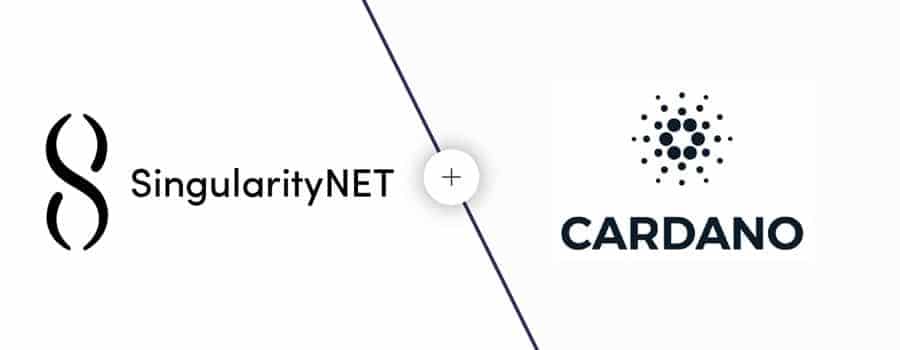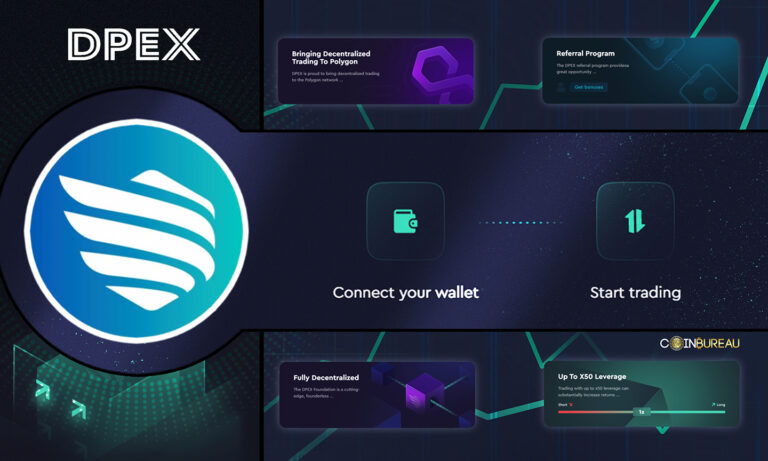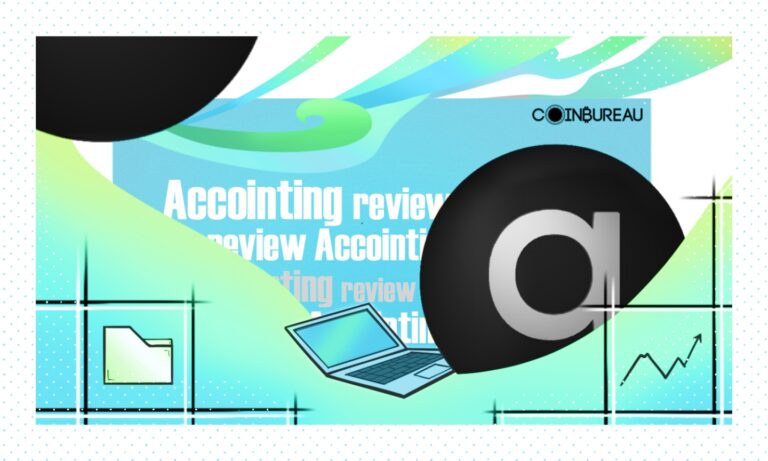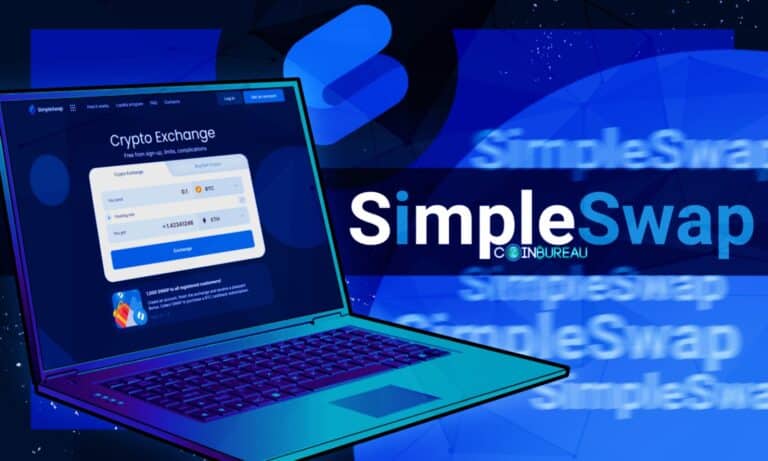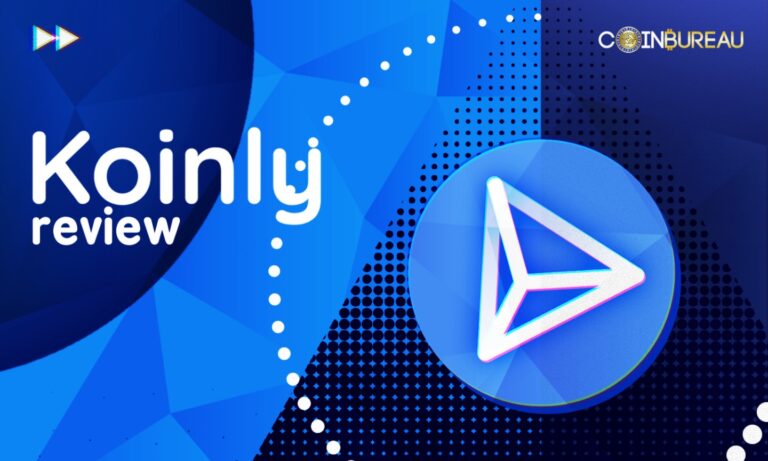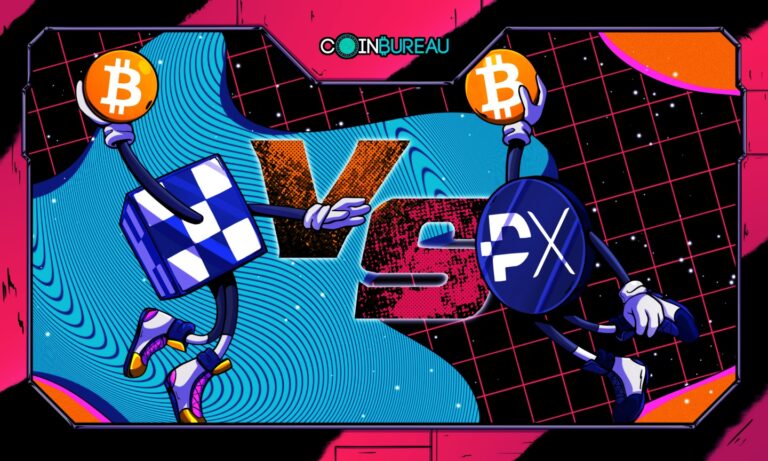Artificial intelligence has been gaining prominence over the past years as more companies and businesses begin exploring the potential of the futuristic technology.
If it also interests you, and you like blockchain technology as well, you might also be interested in the work being done by SingularityNET.
Page Contents 👉
- 1 What's The Purpose of SingularityNET?
- 2 Why is AI Research Important?
- 3 How does SingularityNET Work?
- 4 AI Services Marketplace
- 5 SingularityNET Agents
- 6 The Future of Blockchain and AI
- 7 Self-Organizing AI Internetworking
- 8 Collaborating with Cardano
- 9 The AGI Token
- 10 SingularityNET Team and Progress
- 11 Staking AGI
- 12 Buying, Trading and Storing AGI
- 13 Conclusion
What's The Purpose of SingularityNET?
SingularityNET is a decentralized marketplace for artificial intelligence that is in its third stage of beta testing after several years in development. With a goal of breaking big tech’s current hold on artificial intelligence SingularityNET is an ambitious project to say the least.
But as businesses are increasingly realizing the value of AI applications, the marketplace being developed by SingularityNET stands to gain increased adoption as it allows businesses the ability to tap into the value proposed by AI solutions.
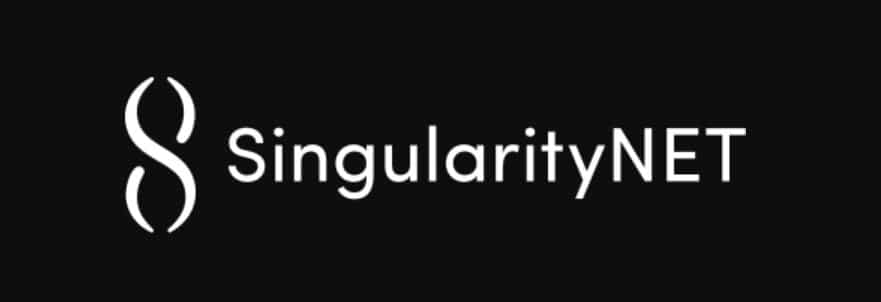
Get ready for AI and blockchain to combine. Image via Singularitynet.io
Another driving factor behind the potential adoption of this marketplace by businesses is the growing divide between academics and researchers who work on AI tools, and the businesses who are looking to use these tools. The reality is that most businesses have no need for the projects being developed in academic circles. Instead they need a more customized solution.
At the same time the academics and researchers struggle to create AI learning machines due to a lack of access to the large data sets required by such projects. SingularityNET has plans to bridge the divide between the two, bringing the needs of business together with the development from researchers.
Why is AI Research Important?
First of all it is important to understand that “The Singularity” is a hypothetical point in the future where our technology evolves to make human intelligence obsolete. This “Singularity Event” refers most specifically to artificial intelligence, which is expected to reach a point where it can improve itself without the need for human intervention. At this point it is expected to grow and develop so rapidly that there will be no way for humankind to keep up or compete.
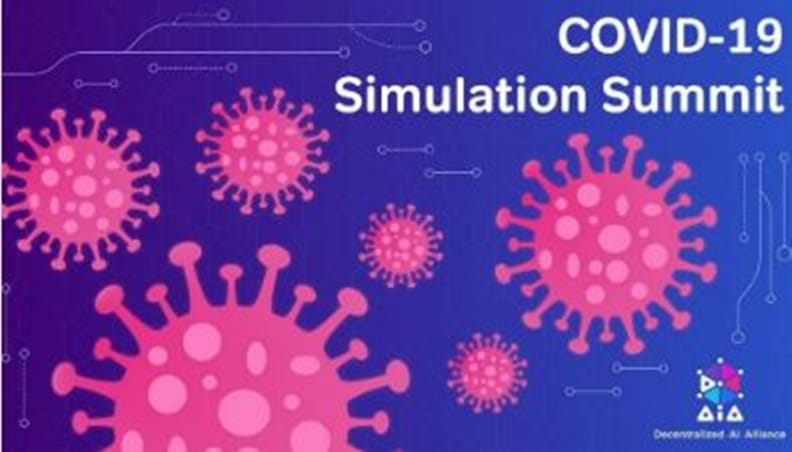
Real world uses of AI research: COVID simulation helps inform policy. Image via Singularitynet.io
In the current day and age artificial intelligence is gaining an increasing amount of research funding in such areas as advertising and other business-centric applications. However it is not being developed in broader use-cases. In short, there is a massive gap between what businesses are asking for and willing to fund, and what researchers are aching to develop.
Businesses require very specific features and functionality in their AI projects, which differs from the more general projects researchers want to work on. Researchers are also quite focused on biological research that combines biology and artificial intelligence for disease diagnosis, prevention or cure, or life-extension projects. Surprisingly there are few businesses interested in this direction for AI research and funding is greatly lacking in this area.
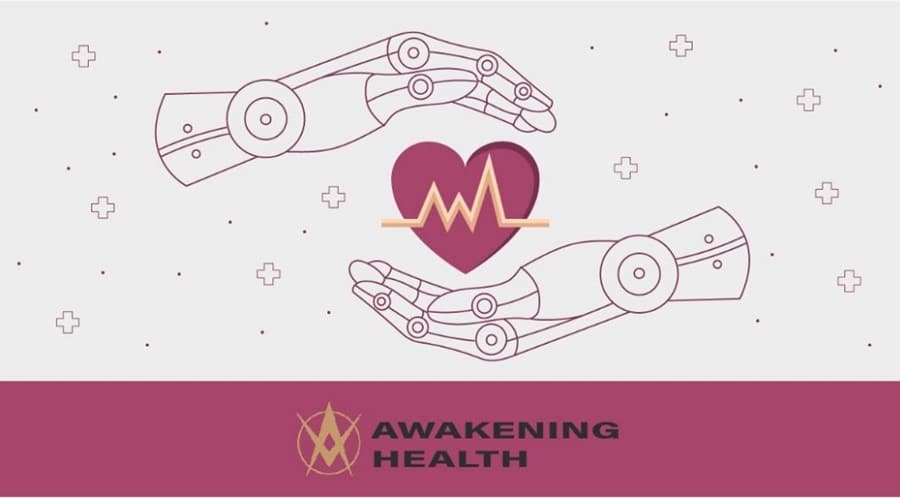
AI can help us to life longer. Image via SingularityNET blog
SingularityNET is the project seeking to close this gap and make a new model that brings business and research together in the quest for AI applications. In this way the project could create an entirely new industry that provides incentives for anyone to create or contribute to AI projects. And it is well on its way to becoming a reality.
How does SingularityNET Work?
SingularityNET is bringing together blockchain technology and artificial intelligence, which understandably makes this a very complex project. It’s exciting to watch the project too, because even though initially the plan is to become an AI marketplace for applications and services, the long-term goal is to create a self-organizing AI network.
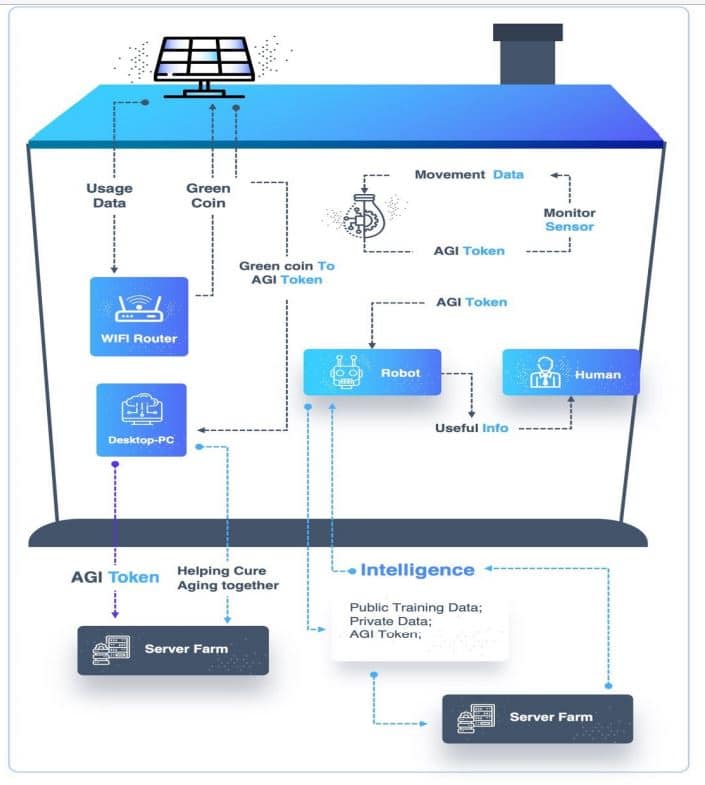
SingularityNET aims to foster intelligent systems and maximize their positive impact. Image via SingularityNET whitepaper
This long-term goal is incredibly complex from the inside, but from the outside users would see what appears to be a simple platform in which machine agents work together to satisfy user needs while also working to make further improvements to the overall network.
As mentioned above, the project is extremely ambitious. Let’s have a look below at what’s been accomplished, and what the project hopes to accomplish as it continues in its evolution to eventually become a self-organizing AI network.
AI Services Marketplace
Because it is such an ambitious and complex project the SingularityNET team is keeping things as basic as possible in the early days of the project by focusing their efforts on creating a marketplace for AI service and applications. In the early years of development the project has focused on these three areas:
- Cloud Robotics
- Biomedical Research
- Cybersecurity
The marketplace that’s been created allows AI developers easy access to a platform that allows them to monetize their creations. Services and tools added to the marketplace can accrue SingularityNET AGI tokens, or can be exchanged for other tools and services if the developer prefers to go that route. The API used to process transactions allows for the transformation of standard AI services into blockchain-based smart contracts.
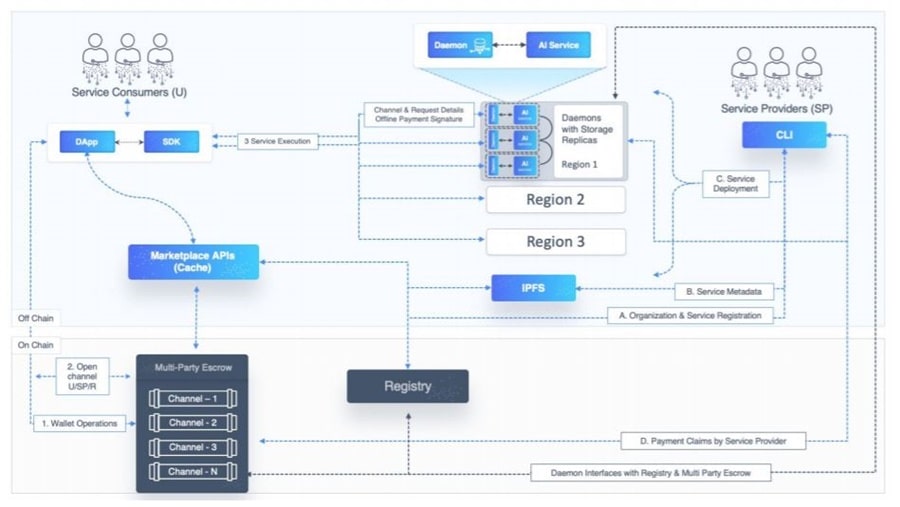
A ‘smart' platform for AI services. Image via SingularityNET whitepaper.
The platform will also use smart contracts for other services, such as powering the voting system that will be used to determine governance issues. The governance model that’s been proposed by the SingularityNET team is one that is similar to the DAO model, and is called a Decentralized Self-Organizing Cooperative (DSOC).
SingularityNET Agents
Agents are a key part of SingularityNET and they fulfill a number of important roles in the ecosystem, and are expected to take on increasing importance as the network evolves. In essence these agents are artificial intelligence entities who execute the smart contracts on the platform. At the beginning the most common agents are the network nodes providing consensus for the blockchain.
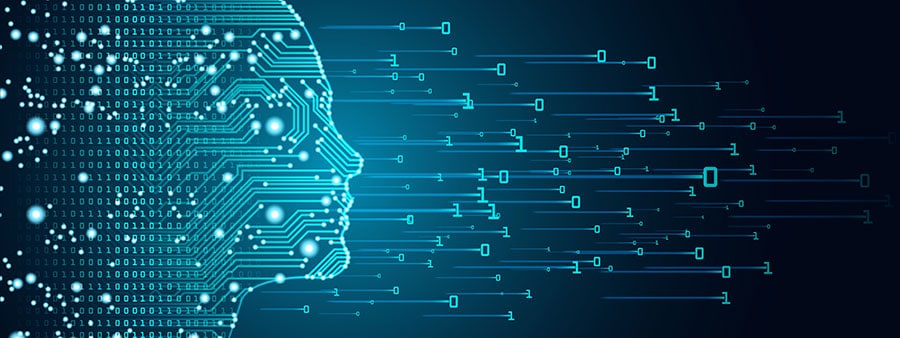
The Agents in an AI System. Image via Shutterstock
Indeed the maintenance of the network’s validity is one of the most important tasks that the agents fulfill. In order to accomplish this task the agents use a binary ranking scale of 0 and 1 in which they rank each other following each network transaction. It’s important to note that the rankings are not mandatory, and they can also be automated. Any task marked complete by an agent that includes a payment is automatically assumed to deserve a ranking of 1.
There’s much more going into the ranking of each agent than the basic reputation scores. The other factors that are included in the overall ranking of each agent, including:
- Benefit Ranking – This is a separate ranking metric based on actions that agents perform which contribute to improving the ecosystem. The factors considered in benefit ranking typically have no monetary value in the system and are considered as charitable actions or community service.
- AGI Token Staking – Agents are required to stake a number of AGI tokens in order to perform in the ecosystem, but when their ranking drops below a certain level their stake can be slashed, causing them to lose a portion of the staked tokens.
- External Validation – It’s possible that companies can be added to the ranking system (by using a KYC service), and that these companies can provide a ranking bonus for the agents in the system.
The Future of Blockchain and AI
SingularityNET is working from the premise that the future of technology is partially the intersection of blockchain technology and artificial intelligence. The team came to this conclusion based on the obvious advantages conveyed by blockchain technology, and the growing developmental status of artificial intelligence technology.
By combining the two technologies the AGI platform begins to realize the evolutionary endgame of the man-machine, and can point it into a direction that is both sustainable and good.
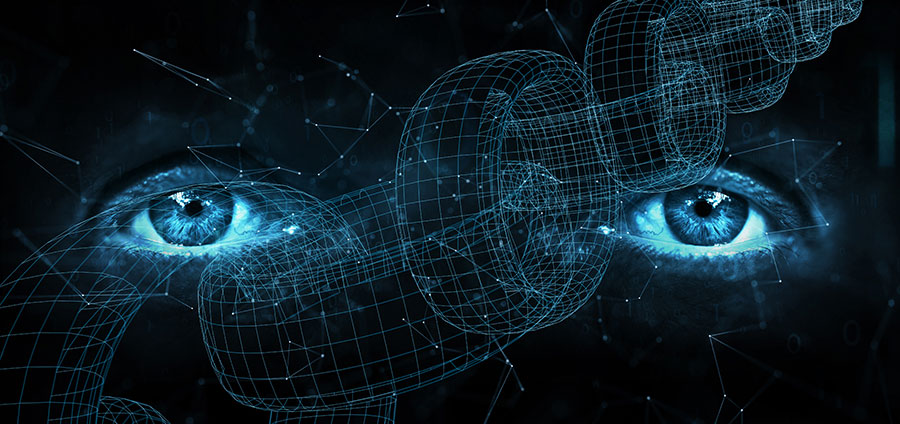
Artificial Intelligence Meets Blockchain
The developers behind SingularityNET believe that even in its infant stages AI technology is beginning to impact on many aspects of people’s work and life. In the current age data is the backbone of all technology, and yet tampering with that data is inexpensive and is very hard to detect. How can we judge the veracity of data when this is the case?
The experience and knowledge of individuals is unable to decipher the counterfeiting technology that’s been created by AI. But if you add blockchain technology anything can become tamper-proof, and this is likely to become a basic, necessary technology in the near future.
SingularityNET is developing the first and only platform in which AI can scale its cooperation. This alone solves one of the major problems that AI researchers have struggled with, and it allows for the unfettered growth of an AI system. Interoperability allows people to make full use of the capabilities of an independent AI system.

Adoption begets more adoption, and agents beget more agents in the virtuous cycle. Image via SingularityNET whitepaper.
With SingularityNET any individual, business, or organization is able to participate in the market to sell and buy services or products on the AGI platform by simply authorizing an AI agent to do so. Once these AI agents begin interacting with one another they no longer exist in a vacuum, and they no longer need to rely on a specific type of infrastructure or company to operate.
With the AGI market being created by SingularityNET any AI agent is free to sell or purchase valuable data sets or analysis tools that would currently need to be developed in-house from scratch. Plus, each AI agent is able to profit from the data it creates itself, creating immense value from proprietary information, functions, and algorithms.
Self-Organizing AI Internetworking
In the long-term view SingularityNET wants to create a network of AI agents that are able to interact with one another. Currently they do this by using resources from the OpenCog Foundation, and one of the most notable and easiest ways to gain some insight into the vision of the team is to examine Sophia, the humanoid robot that was created using SingularityNET technology.
Sophia the Robot is pretty well known in the mainstream, but what many do not know is that the robot was designed to use a variety of AI agents in its operation. These include the AI agents that help with language processing, and other agents that work to control physical movements. Over the years Sophia has become increasingly complex and sophisticated as the number and nature of AI agents in use increases and become more complex themselves.

Sophia is the best example of how agents can work together. Image via BusinessInsider.com
The AI agents that are used in Sophia give us a glimpse of the future of interactions in an AI system. For example, if you were to ask Sophia to summarize a book or a movie the robot would begin by sending the request to a primary AI agent. That agent likely won’t be able to complete the task itself, but it may know that agent 2 specializes in literature, or that agent 3 in an expert in movies. After contacting these agents it might them contact agent 4, which is an agent specializing in summarizing text.
In this case agent 1 might pay agent 2 to transcribe some book and agent 4 to summarize that transcription. All the information will be delivered to agent 1 and the agent will hand it over to Sophia, who will pay the agent for coordinating the activity.
At the same time all of the agents involved in the process update their own engines with all of the knowledge they gain from the process. This cooperation allows the AI agents to learn as they complete tasks, and by cooperating with one another they are able to grow the entire system much faster than would otherwise be possible by a single AI agent along.
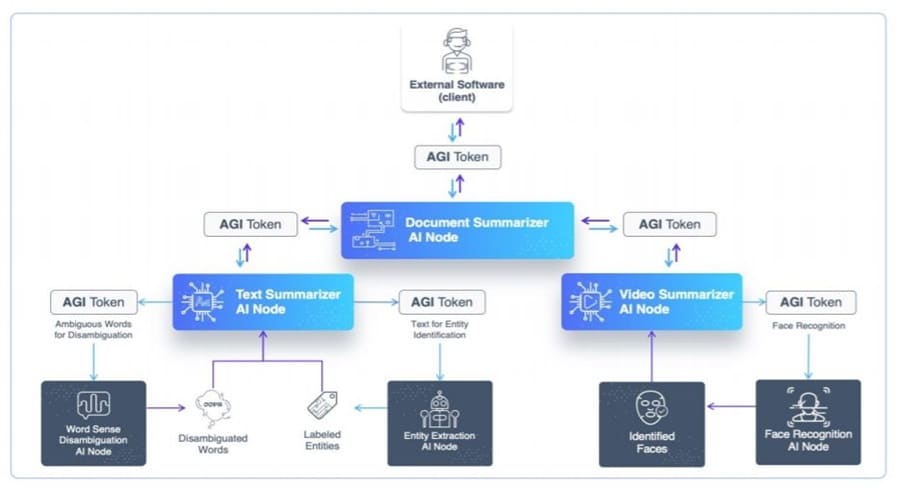
AI agents working together to complete a task. Image via SingularityNET whitepaper.
And if that’s not enough, the SingularityNET team has theorized that future iterations of its platform will feature AI agents which are capable of creating new AI agents to complete specific tasks. Taken to its logical conclusion this will eventually lead to an autonomous network that is able to self-organize and grow without any additional inputs.
Collaborating with Cardano
In September 2020 SingularityNET made the announcement that they have begun collaborations with IOHK, the technology company that was founded by Charles Hoskinson, and is behind the Cardano blockchain. The purpose of the collaboration is to port some of the SingularityNET platform to the Cardano blockchain.
Until now SingularityNET has been run on the Ethereum blockchain, but the team has always said they would prefer that SingularityNET be as blockchain agnostic as possible, and this means porting it to as many other blockchains as possible.
In the case of this first move to Cardano, the company claims the decision was made due to issues surrounding speed and cost for the Ethereum network. The team also said there are some concerns around Ethereum 2.0, which has been rolled out, but still has some questions regarding the timing of certain features.
According to Dr. Ben Goertzel, the CEO and founder of SingularityNET Foundation:
“Current speed and cost issues with the Ethereum blockchain have increased the urgency of exploring alternatives for SingluarityNET’s blockchain underpinning. The ambitious Ethereum 2.0 design holds promise but the timing of rollout of different aspects of this next-generation Ethereum remains unclear, along with many of the practical particulars.”
In addition to working on a solution that will allow a large portion of SingularityNET to be ported from Ethereum to Cardano, the two teams have also been working on a mechanism to move a portion of the ERC-20 based AGI tokens to Cardano-based AGI tokens. The exact number of tokens to be swapped will be determined by the market, according to Dr. Goertzel.
The AGI Token
The ICO for SingularityNET’s AGI token was held in December 2017, in the midst of the massive rally that took many cryptocurrencies to their all-time highs. The project was able to reach its hard cap in under 24 hours, selling 500 million AGI tokens and raising $32.8 million. The tokens were sold at a price of $0.10 each, although many tokens were given away as bonuses.
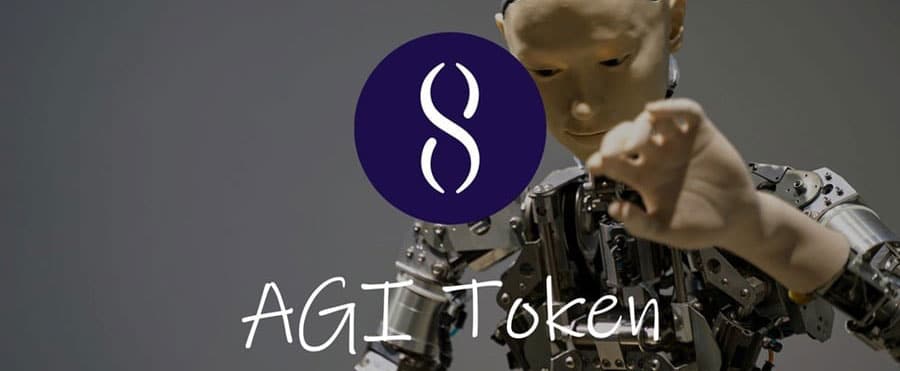
Powering the SingularityNET platform. Image via Dexplain.com
At the time of the sale there were 1 billion AGI tokens minted, and besides the 500 million tokens that went to participants in the ICO, there were 200 million allocated to the SingularityNET reward pool, 180 million distributed to the founders, 80 million given to the SingularityNET Foundation to support operations, and 40 million distributed as bounties to campaign supporters.
The 200 million reward pool tokens are being used in the staking system, and are being released to agents that participate in staking for the total period of 10 years. Once all of these reward pool tokens have been distributed it will be up to the community to vote and decide if more tokens should be minted to refresh the reward pool or if some other mechanism will be used.
SingularityNET Team and Progress
The SingularityNET team has over 50 individuals, with a dozen PhD holders. The creator of SingularityNET is Dr. Ben Goertzel, who is also the Chief Scientist at Hanson Robotics, where he helped to create the robot Sophia. In addition, Dr. Goertzel is the chairman of the Artificial General Intelligence Society, and the OpenCog Foundation.

The founding members of the SingularityNET platform. Image via SingularityNET.io
Lead by Dr. Ben Goertzel, the SingularityNET team includes seasoned engineers, scientists, researchers, entrepreneurs, and marketers. The core platform and AI teams are further complemented by specialized teams devoted to application areas such as robotics and biomedical AI. And of course, Sophia the robot is also a proud member of the SingularityNET team.
The team has made good progress on the platform, and is currently on the third beta version of the platform. The recent progress of the team can be seen here on their project roadmap.
There are a number of blockchain platforms using artificial intelligence, mostly as part of prediction services. None are nearly as complex and advanced, with as ambitious of a final goal as SingularityNET.
Staking AGI
Staking AGI tokens to support the SingularityNET platform and ecosystem went live in April 2020. By staking AGI and supporting the blockchain users are rewarded with more AGI tokens.

Stake AGI and earn interest for supporting the network. Image via Staking.SingularityNET.io
According to the SingularityNET documentation the role of staking in the SingularityNET platform ecosystem is closely tied to the fiat-crypto gateway — a collection of software processes that together allow users the option to interact with AI providers and other users on the SingularityNET platform using entirely fiat currency rather than AGI tokens.
The fiat-crypto gateway hasn’t been fully implemented yet, but staking has, and even once it is all of the value exchange on the platform will happen with AGI tokens.
Staking in SingularityNET occurs in stages that last 30 days currently. A single staking session has the following stages
- Stake window Period
- Staking Period
- Opt-out Period
- Withdrawal Period
Once the call for staking period is over and requests are accepted, a staking window of the specified time period begins. Tokens are locked in the staking smart contract for the duration of that window. If users don’t request their tokens back, they default to be automatically re-staked in the next window, along with the reward tokens. Alternatively it is possible to opt-out of restaking through the settings in the easy to use Singularity staking dApp.
Buying, Trading and Storing AGI
The AGI token hasn’t been great to early investors if they’ve continued holding. The all-time high of $1.86 was hit back in January 2018, just after the ICO. Users who cashed out then did very well.
Those who’ve decided to hodl are in far worse shape, with AGI trading at just under $0.05 in late December 2020. That’s a loss of over 50% even as Bitcoin is climbing above $20,000 to a new all-time high.
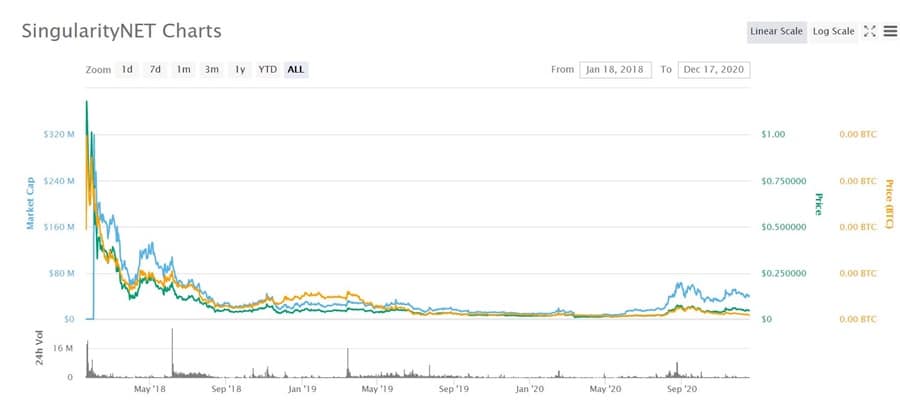
The AGO token hasn't had the best price performance. Image via Coinmarketcap.com
It’s also interesting to see that even after three years the AGI token isn’t listed on many exchanges, although with Binance being one of them there’s plenty of opportunity for users to purchase the token. Other possibilities are Kucoin and Bitfinex, as well as the DEX Uniswap.
AGI was created as an ERC-20 token and remains one in late 2020, but there is a Cardano version in the works, although there’s been no indication yet when it might be released. Investors seemed excited by the news of a partnership between Cardano and SingularityNET when it was announced though, so the release of an ADA-based version of AGI could give the token a lift.
Conclusion
SingularityNET’s AI marketplace is a one-of-a-kind creation, and as far as we know there is no other project working on anything similar or with near this scale in the AI space. The marketplace also promises a needed service for businesses interested in adding AI services that improve operations without costing a fortune.
Users seemed enthused about the project in its early days, but the poor performance of the AGI token indicates much of that enthusiasm has likely waned by now, and SingularityNET will need to deliver something impressive to reignite the prior excitement shown by early investors.
And while the marketplace is an exciting notion, the self-directed autonomous AI network that is the planned long-term vision of the team is far more ambitious and exciting. That could end up as one of the most valuable AI/blockchain projects ever, if the SingularityNET team can deliver on the development. Of course with the marketplace just launching recently it is far too early to know what the project might eventually develop into.
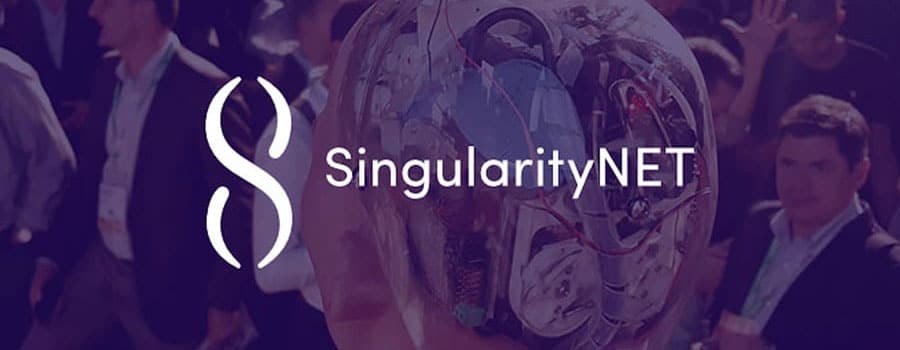
Is SingularityNET the future of blockchain and AI? Image via Medium.com
One thing that is clear at this point is that SingularityNET combines two of the technologies that could remain at the forefront of the tech industry for decades to come. And there’s no reason to think that the ability to easily purchase useful AI algorithms is going to be extremely powerful, useful, and valuable in the coming years.
There are some concerns with the project, such as the potential consequences that could come from decentralizing such powerful technology. There exists a real danger in allowing such powerful AI services to be purchased by any anonymous person or group.
It could also be dangerous if SingularityNET reaches its ultimate goal of creating an autonomous AI agent network that is both self-sustaining and able to grow without any additional help from humans. What might such a network do if it was smarter than humans and didn’t need our help?
All of this is very speculative of course as the SingularityNET project is in very early stages when compared with its ultimate goals. Such a powerful idea is definitely worth watching though, and any break-through could cause a huge spike in the value of the AGI token.
Featured Image via Shutterstock

